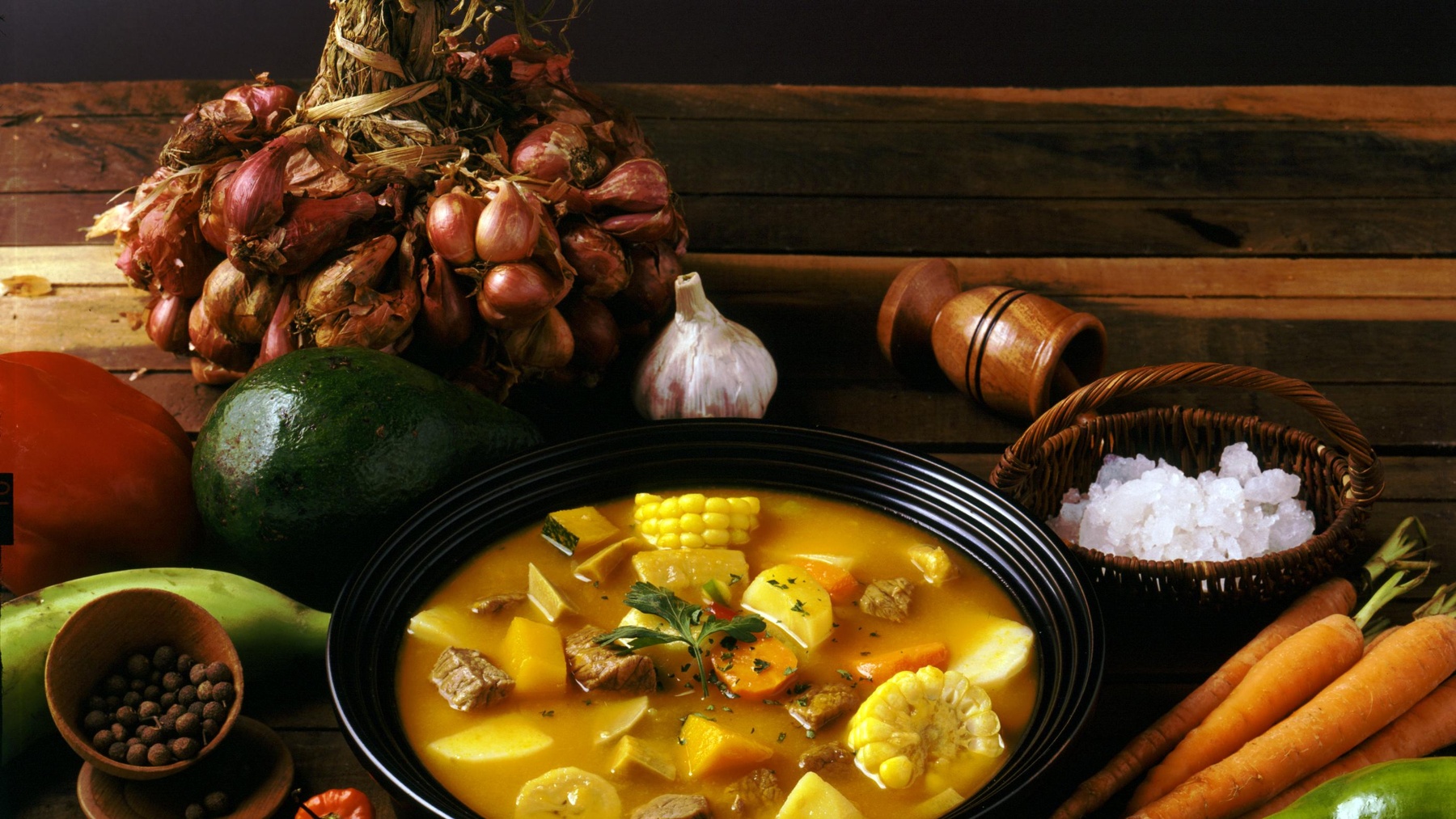The Dominican Republic, nestled in the heart of the Caribbean, is renowned for its stunning beaches, vibrant culture, and, of course, its delectable cuisine. Influenced by a blend of African, Spanish, and indigenous Taíno flavors, Dominican food offers a delightful fusion of ingredients, spices, and cooking techniques. From hearty stews to fresh seafood, the gastronomy of the Dominican Republic is a true feast for the senses.
NAVIGATE THIS ARTICLE:
Dominican Mangú
La Bandera Dominicana
Dominican Mofongo
Caribbean Octopus
Sancocho Stew
Pit Roast Pork
Dominican Street Food
Dominican Desserts
Habichuelas con Dulce
Arroz con Leche
Pasteles en Hoja
Dominican Republic Top Chefs
Dominican Mangu
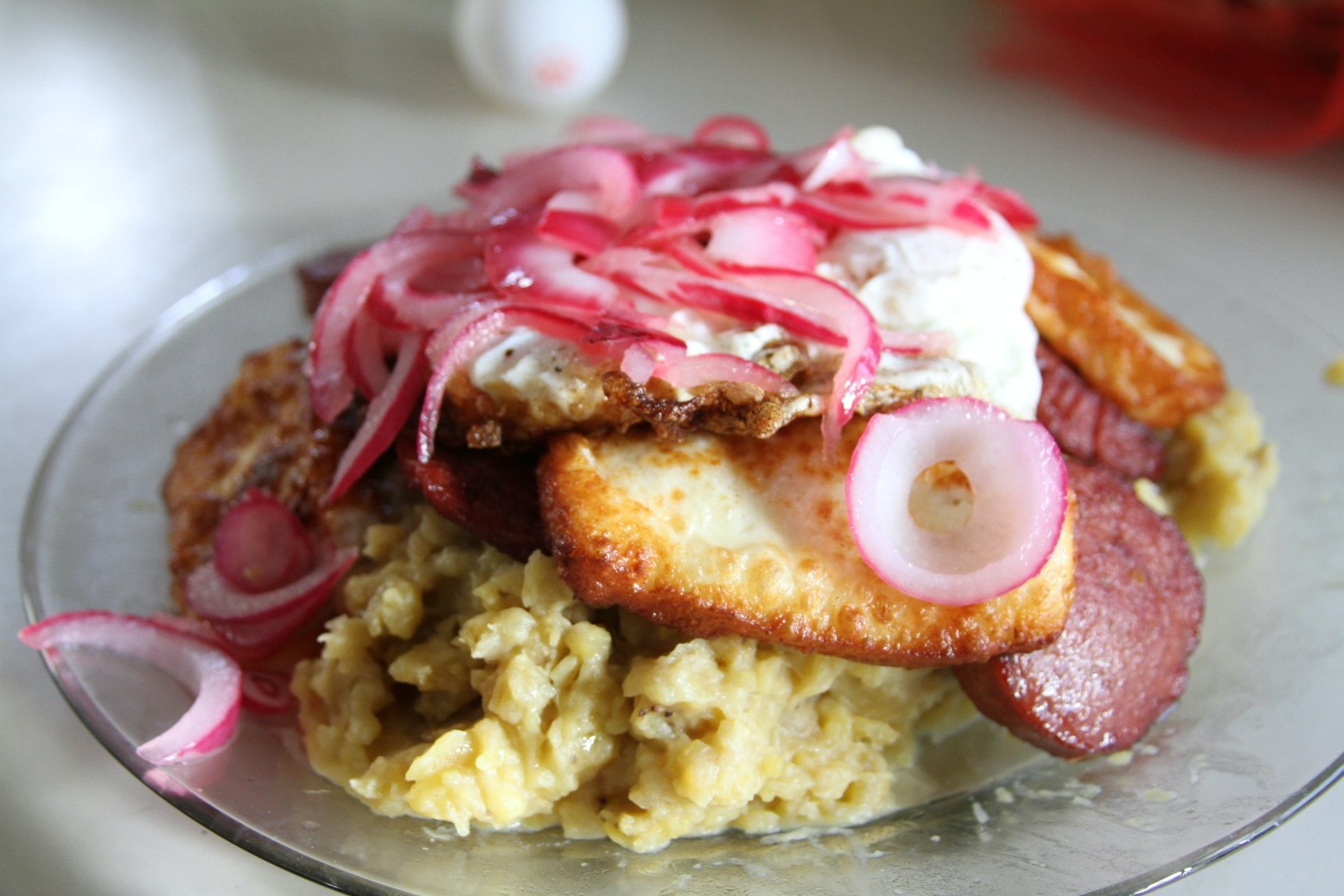
Mangú is a traditional Dominican dish made from boiled and mashed green plantains. It is a staple food in the Dominican Republic and is often served for breakfast, lunch, or dinner. Mangu is typically served with fried eggs, fried cheese, and fried salami, and is often topped with pickled red onions. The dish is known for its creamy texture and slightly sweet flavor.
The name “mangu” comes from the West African word “mangusi,” which refers to any mashed vegetable from the earth. The dish is thought to have originated in Africa and was brought to the Dominican Republic by enslaved people during the colonial era. Mangu is now one of the most popular dishes in the Dominican Republic and is enjoyed by people of all ages.
Boiled mashed plantains can be traced back to Africans in the Congo region who were brought to the island during the slave trade. The original word was something akin to “mangusi” and referred to almost any root vegetable that was boiled and mashed. Green plantains can be replaced with ripe-plantains (de platano maduro), green bananas (de guineitos), or squash.
“La Bandera” Dominicana
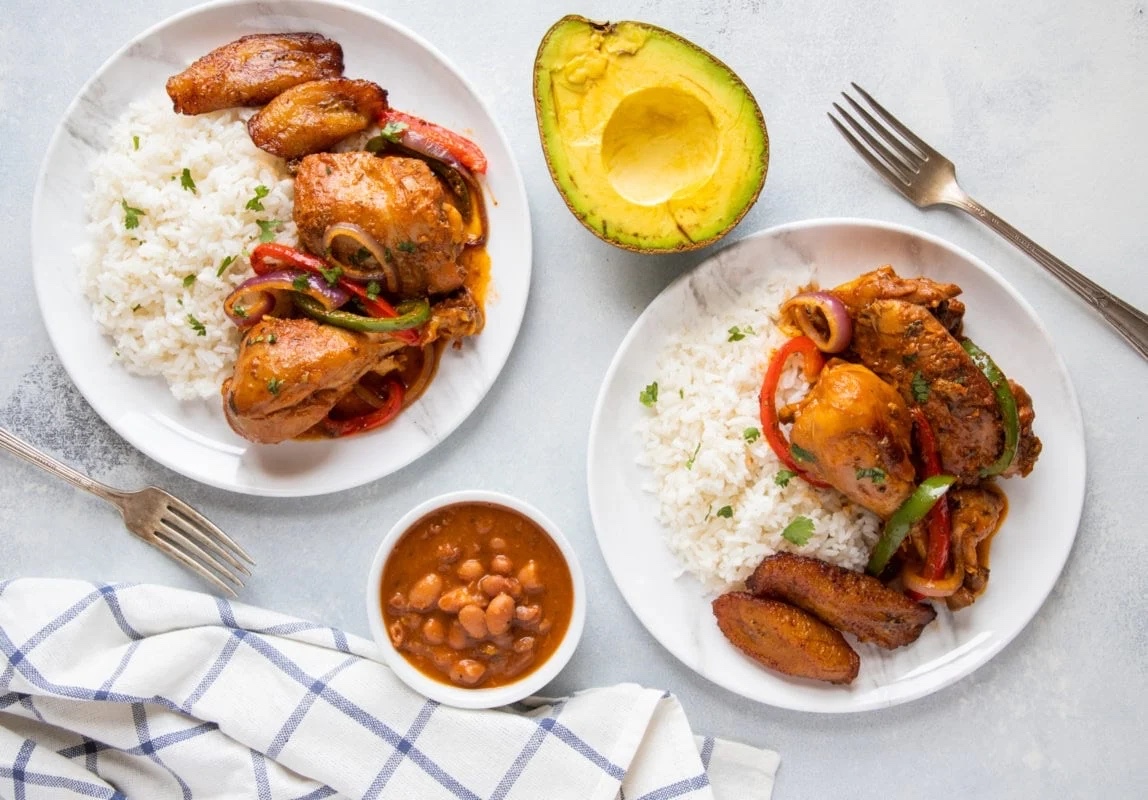
Rice, beans, and plantains form the backbone of Dominican cuisine. Locally known as “La Bandera” (The Flag), this traditional meal consists of white rice, red beans, and stewed meat, typically chicken, beef, or pork. It is often accompanied by a side of sweet plantains, creating a harmonious balance of flavors.
La Bandera reflects the Dominican Republic’s reliance on staple ingredients and its ability to transform them into a satisfying and wholesome dish. it is considered the national dish, hence the name “La Bandera Dominicana”.
One cannot discuss Dominican food without mentioning the country’s love affair with seafood. Surrounded by the Caribbean Sea and the Atlantic Ocean, the Dominican Republic boasts an abundance of fresh fish and seafood. From red snapper and grouper to shrimp and lobster, the coastal regions offer a variety of mouthwatering options.
Dominican Mofongo
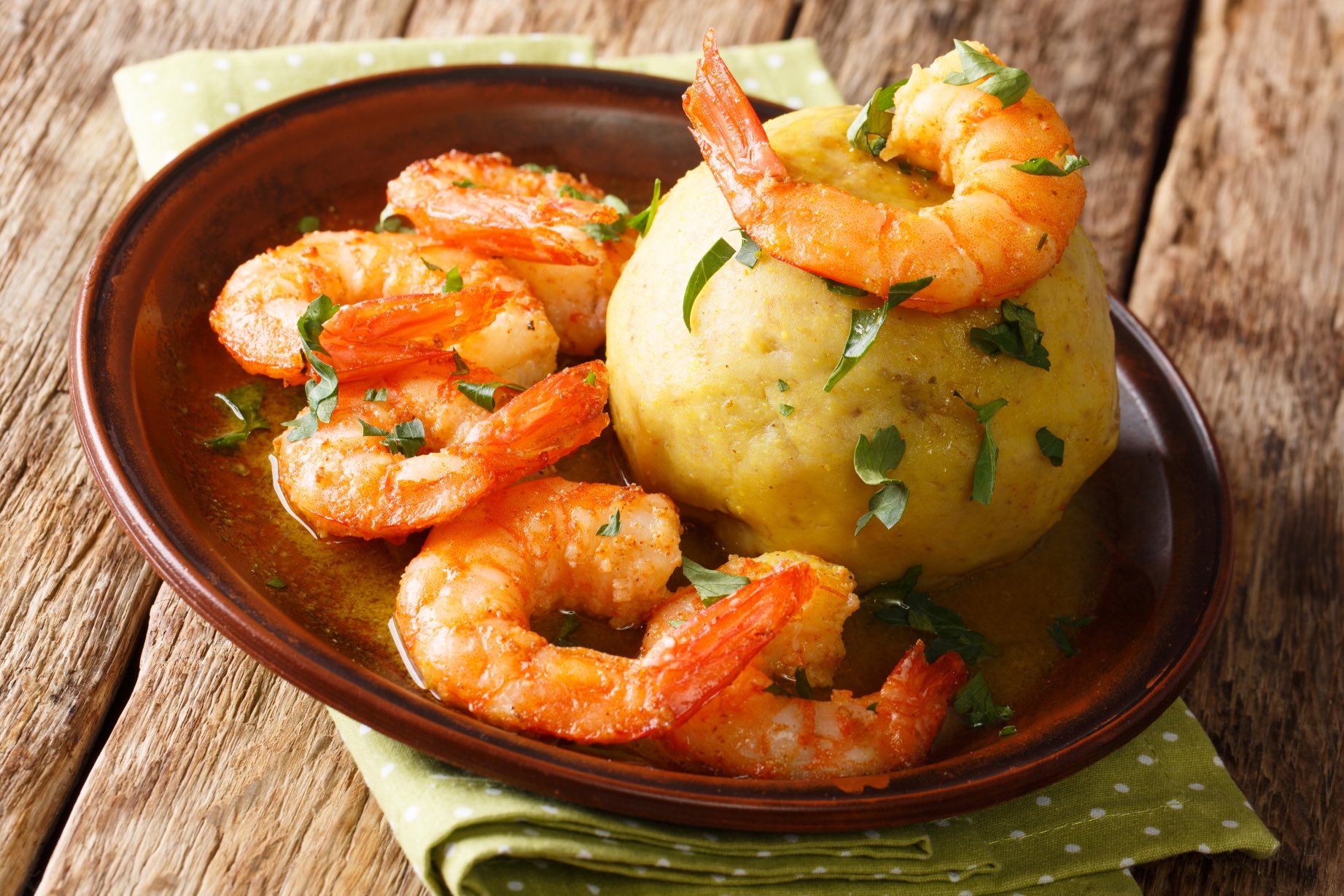
Dominican mofongo is a traditional dish made from fried green plantains that are mashed with garlic and pork cracklings (chicharrón), or seafood (shrimp). It is typically served with a side of stewed chicken or beef, and is often topped with a fried egg. The dish is known for its rich flavor and hearty texture.
The name “mofongo” comes from the West African word “fungi,” which refers to a dish made from mashed plantains. The dish is thought to have originated in Africa and was brought to the Dominican Republic by enslaved people during the colonial era. Mofongo is now one of the most popular dishes in the Dominican Republic and is enjoyed by people of all ages.
Another popular dish is “Pescado con Coco” (Fish with Coconut), where fish is cooked in a creamy coconut sauce, infused with aromatic spices like garlic, cilantro, and annatto. The result is a succulent and flavorful seafood experience that captures the essence of the island.
Caribbean Reef Octopus
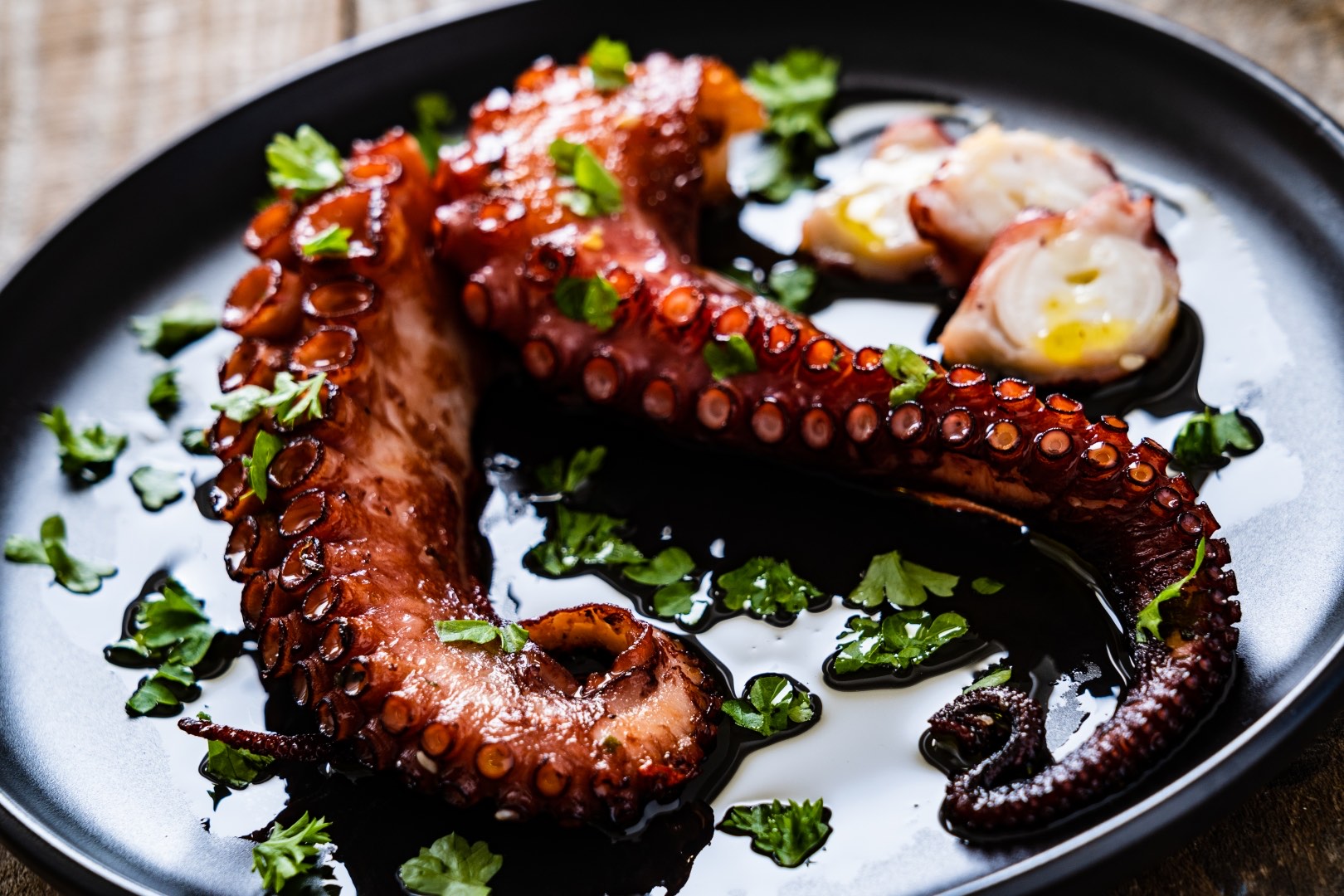
Caribbean Reef Octopus is a popular seafood in the Dominican Republic and is often cooked in a variety of ways. One common dish is pulpo guisado (creole, or a la criolla), which is braised octopus in a tomato sauce with onions, peppers, and garlic. Another popular dish is pulpo a la parrilla, which is grilled octopus that is often served with a vinaigrette dressing or a mojo criollo sauce.
Caribbean Reef Octopus can also be fried and served with tostones, which are fried green plantains. Octopus is also a common ingredient in salads, such as ensalada de pulpo, which is made with octopus, tomatoes, onions, and cucumbers. It can also be used in soups and stews, such as sancocho de pulpo, which is a thick stew made with octopus, chicken, beef, and vegetables.
Dominican Sancocho
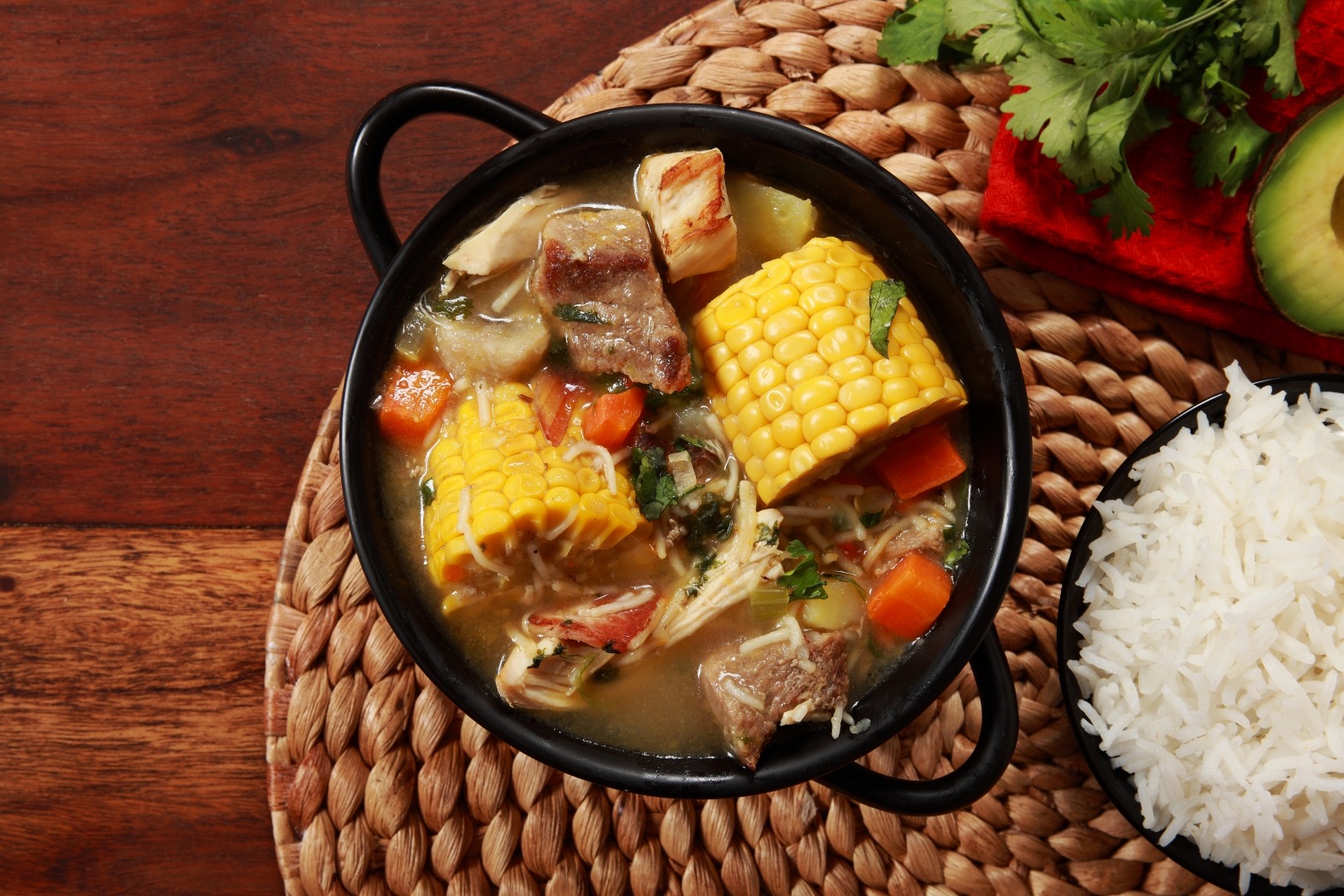
Dominican sancocho is a hearty stew made with a variety of meats, vegetables, and starches. It is a popular dish in the Dominican Republic and is often served as a main course for a special occasion.
The name “sancocho” comes from the Taíno word “sancocho,” which means “soup.” The dish is thought to have originated in the Taíno culture, which inhabited the Dominican Republic before the arrival of the Spanish. The traditional Dominican sancocho is made with a variety of meats, including chicken, beef, pork, and goat.
It also includes a variety of vegetables, such as yuca, plantains, corn, and potatoes. The stew is cooked in a flavorful broth that is made with spices such as garlic, oregano, and cumin. Sancocho is typically served with white rice and avocado. It can also be served with other side dishes, such as fried plantains, salad, or tostones (fried green plantains).
Puerco a la Puya
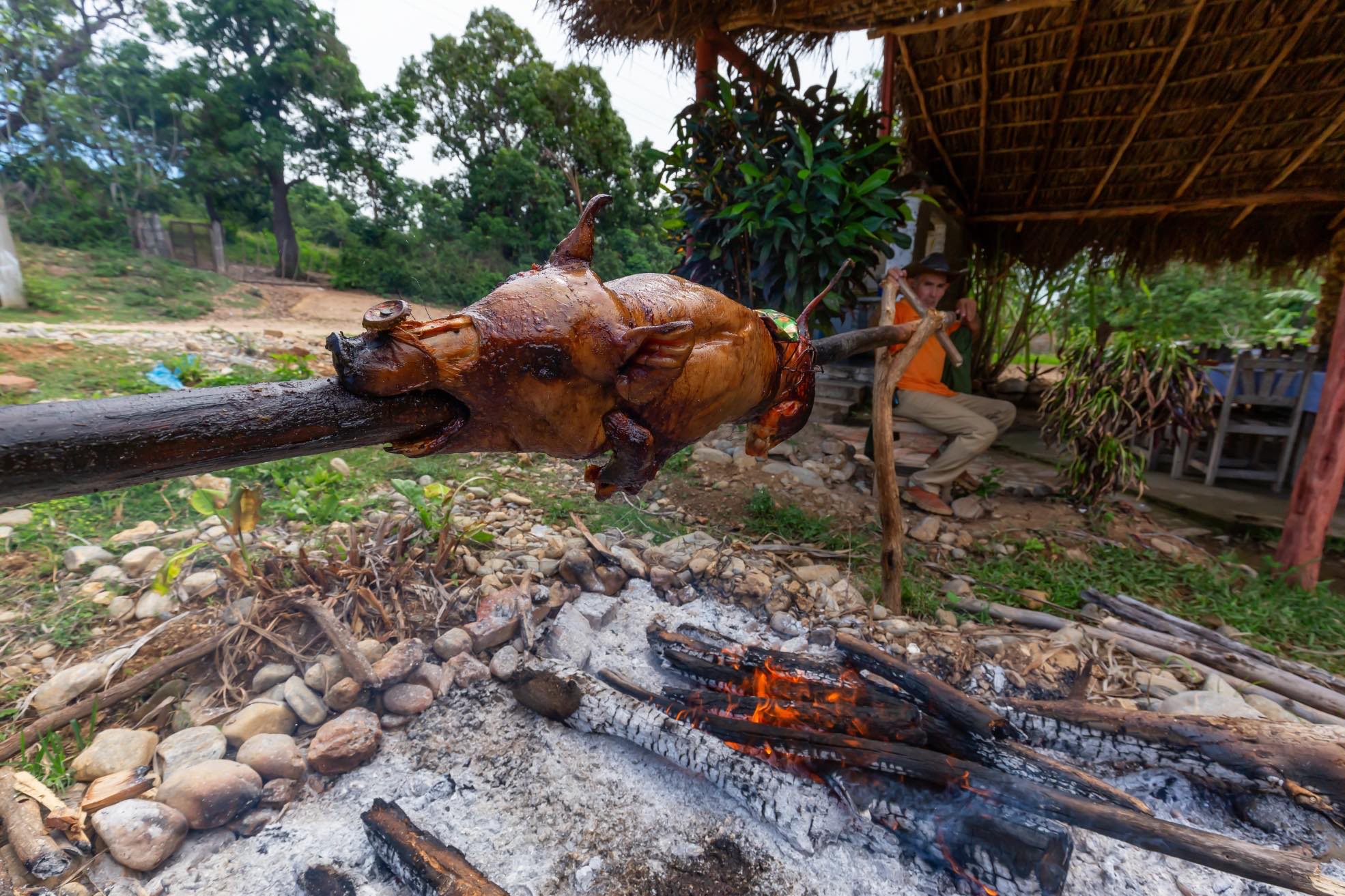
Puerco a la puya, also known as lechón asado or cerdo asado, is a traditional dish of the Dominican Republic and Cuba. It is a whole pig that is roasted over an open fire on a long, skewer-like rod called a puya. The pig is typically marinated in a mixture of citrus juices, garlic, oregano, and other spices before being cooked.
The slow roasting process allows the flavors of the marinade to infuse the meat, resulting in a juicy, flavorful dish. Puerco a la puya is often served as the main course at large gatherings and celebrations, such as Christmas, New Year’s Eve, and family reunions. It is also a popular dish at street fairs and festivals.
Pork roast is another version, locally called Lechon Asado. Aunt Clara from dominicancooking.com provides a video with the recipe to roast pork in the oven.
Dominican Street Food
When it comes to street food, the Dominican Republic truly shines. One ubiquitous snack is the “empanada,” a savory pastry filled with various ingredients such as ground beef, chicken, cheese, or vegetables. Also the Rikitaki, chimichurri and Yaroa, found everywhere on the street stalls and food trucks.
Chimichurri
Dominican chimichurri is a traditional Dominican street food that shares its name with the famous Argentinian chimichurri sauce. However, the Dominican version is a much simpler dish, consisting of a handmade ground beef patty, grilled alongside onion, cabbage, and tomato. It is served inside a pan de agua bread, a type of Dominican bread that is similar to a French baguette.
The chimichurri sauce is used as a condiment, drizzled over the top of the burger. The sauce is made with parsley, garlic, olive oil, and spices, and it gives the burger a bright, flavorful taste. One of the main characteristics that distinguishes Dominican chimichurri from other burgers is the use of shredded cabbage instead of lettuce.
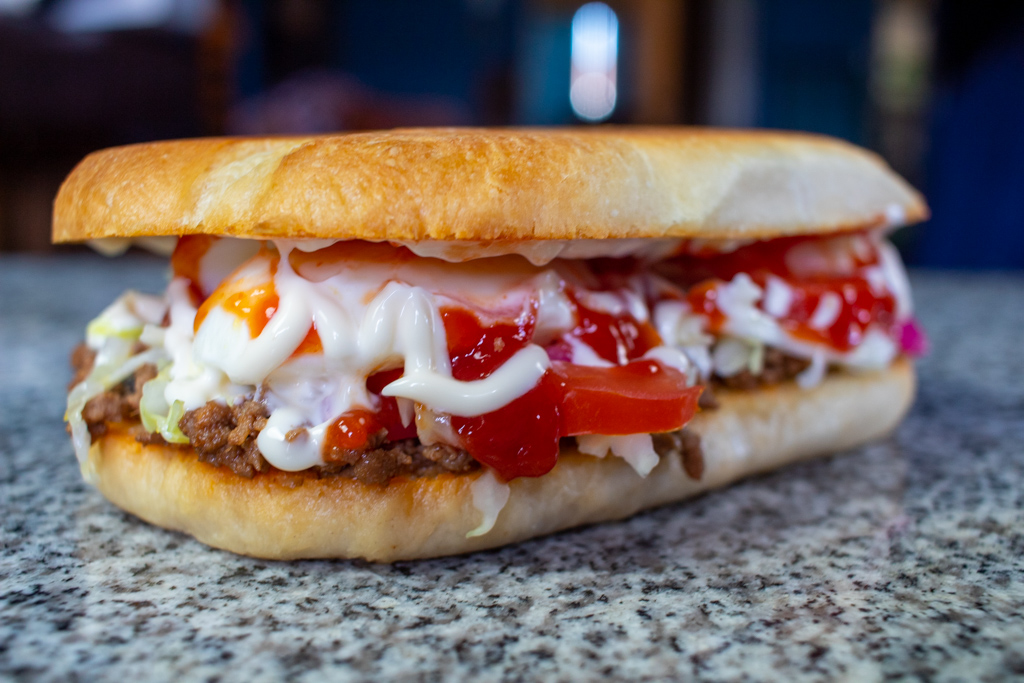
Cabbage is a more common vegetable in Dominican cuisine, and it adds a crunchy texture and slightly sour flavor to the burger. Another difference is that Dominican chimichurri never includes cheese. This is likely because cheese is not as common in Dominican cuisine as it is in other parts of the world.
Dominican chimichurri is a popular street food that can be found all over the Dominican Republic. It is often sold by street vendors late at night, and it is a popular late-night snack or meal. The dish is also relatively inexpensive, making it a popular option for budget-minded diners.
The Yaroa
Yaroa is a Dominican street food that originated in Santiago. It is made with a layer of French fries or mashed sweet plantains (yaroa de plátano), a middle layer of minced beef in tomato sauce and a top layer of melted cheddar. It is then drizzled with mayo and ketchup.
The name “yaroa” is thought to come from the name of a neighborhood in Santiago called Yaroa. The dish was created in the late 1990s by a street vendor named Karina. She was inspired to create the dish after seeing a similar dish called “poutine” in Canada.
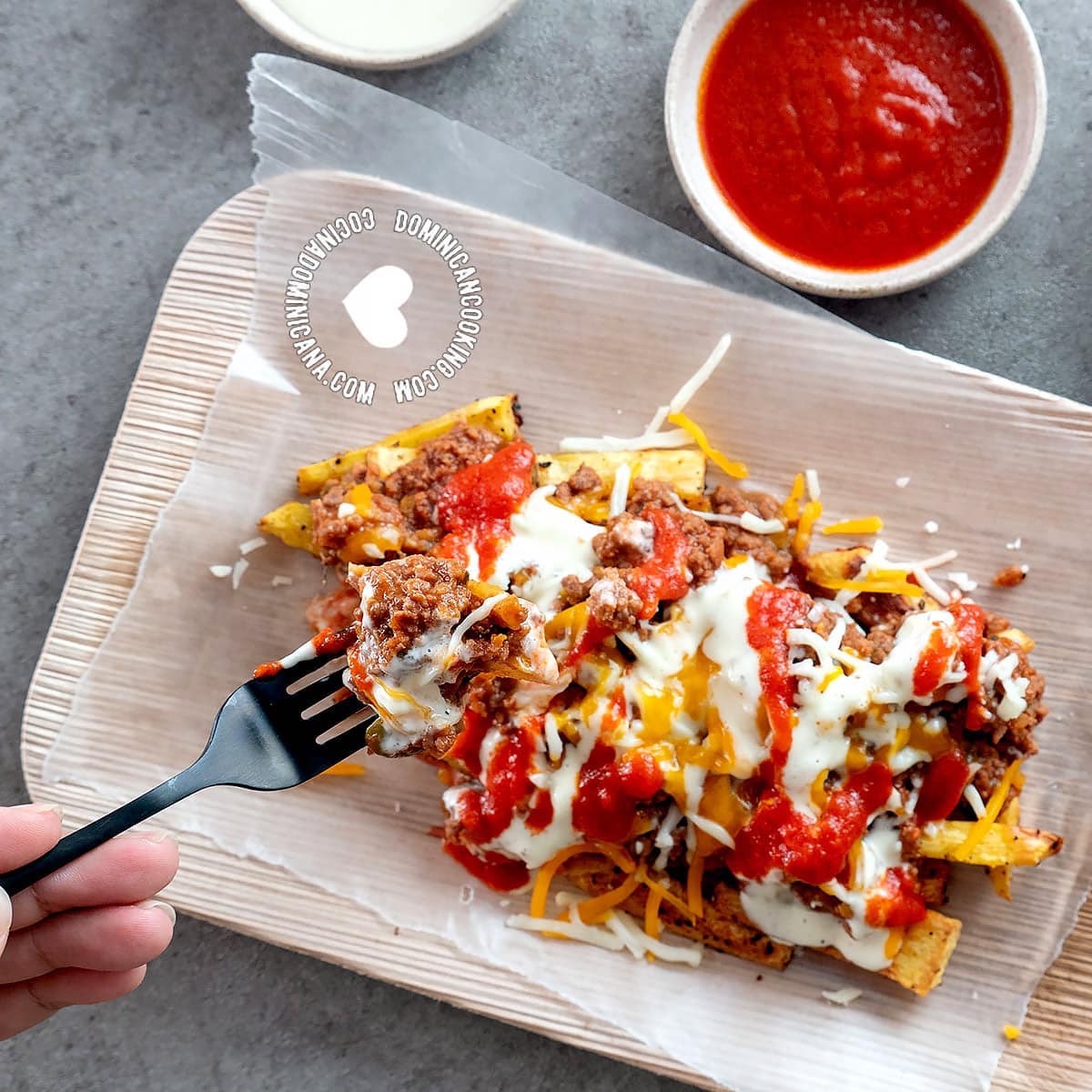
Yaroa quickly became popular in Santiago and spread to other parts of the Dominican Republic. It is now a popular street food all over the country. It is often eaten as a late-night snack or meal.
These handheld delights are perfect for a quick bite on the go. Another street food favorite is the “chicharrón,” crispy deep-fried pork belly or pork rinds. Served with yucca or green plantains, it’s a satisfyingly crunchy and savory treat.
Dominican Desserts
For those with a sweet tooth, Dominican desserts are a true delight. One iconic dessert is “tres leches,” a sponge cake soaked in three types of milk—condensed milk, evaporated milk, and heavy cream. Majarete is also a must try, a corn pudding dessert favored by locals. Flan de Leche (milk flan) is another staple of the Dominican dessert menu.
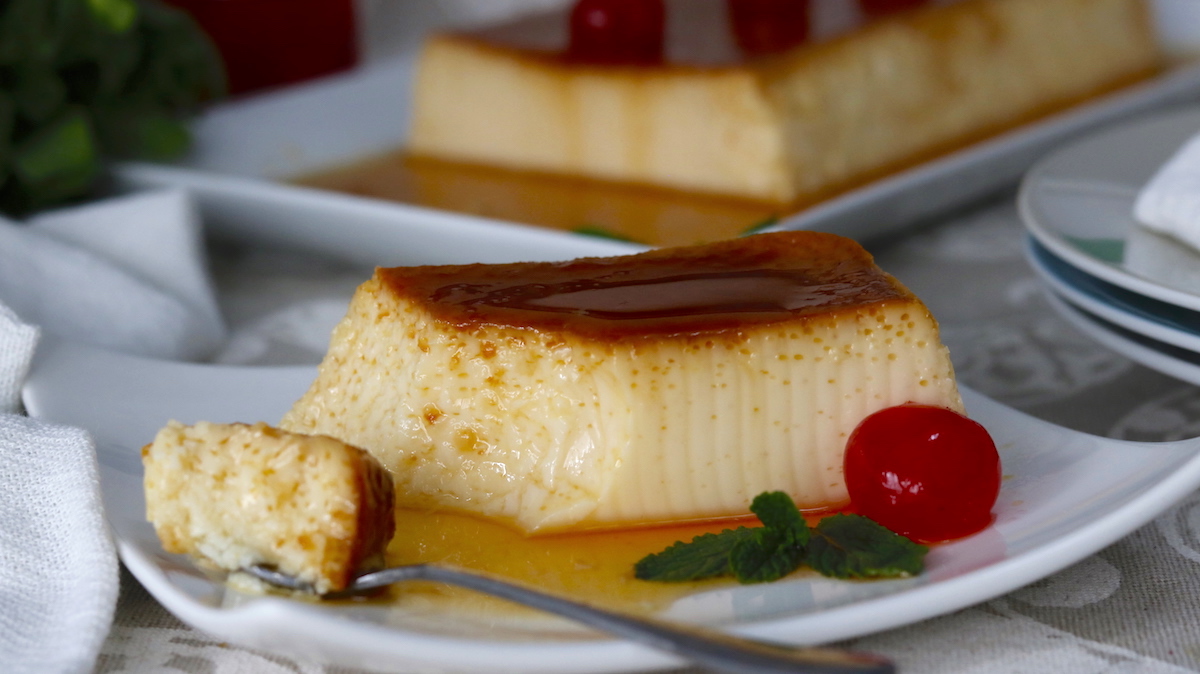
Topped with whipped cream and a sprinkle of cinnamon, this moist and indulgent cake is a staple at celebrations and family gatherings. Another popular sweet treat is “bizcocho dominicano,” a light and fluffy vanilla cake often adorned with vibrant decorations and fruit.
Habichuelas con Dulce
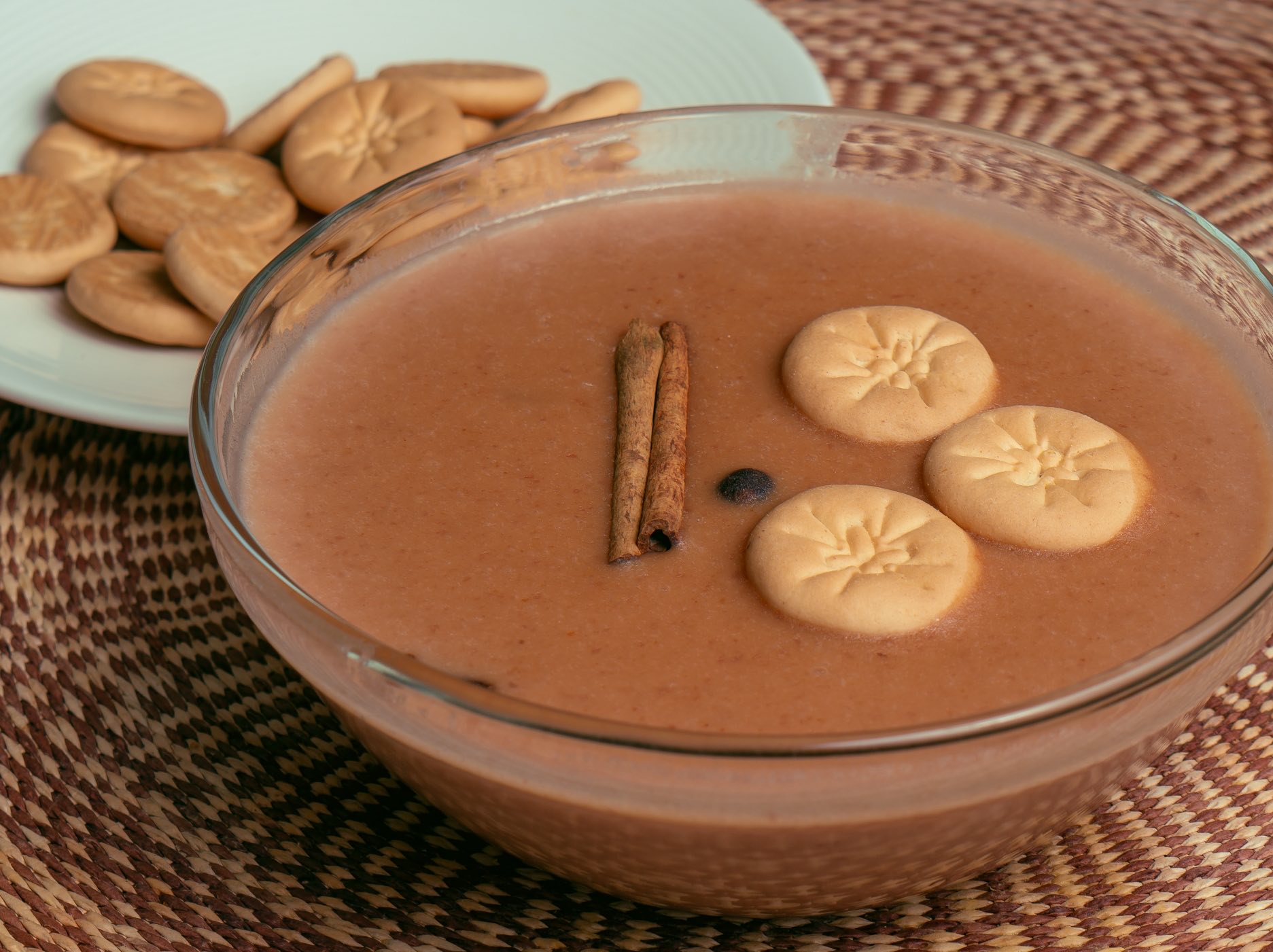
To complement these mouthwatering dishes, Dominican beverages offer a refreshing respite. One beloved drink is “morir soñando,” a creamy concoction made with orange juice, milk, sugar, and ice. It’s the perfect blend of tangy and sweet, providing a burst of refreshment on hot Caribbean days.
Another traditional beverage is “mamajuana,” an herbal drink consisting of rum, red wine, and a blend of herbs and spices, often enjoyed as a digestif or for its purported medicinal qualities.
Arroz con Leche
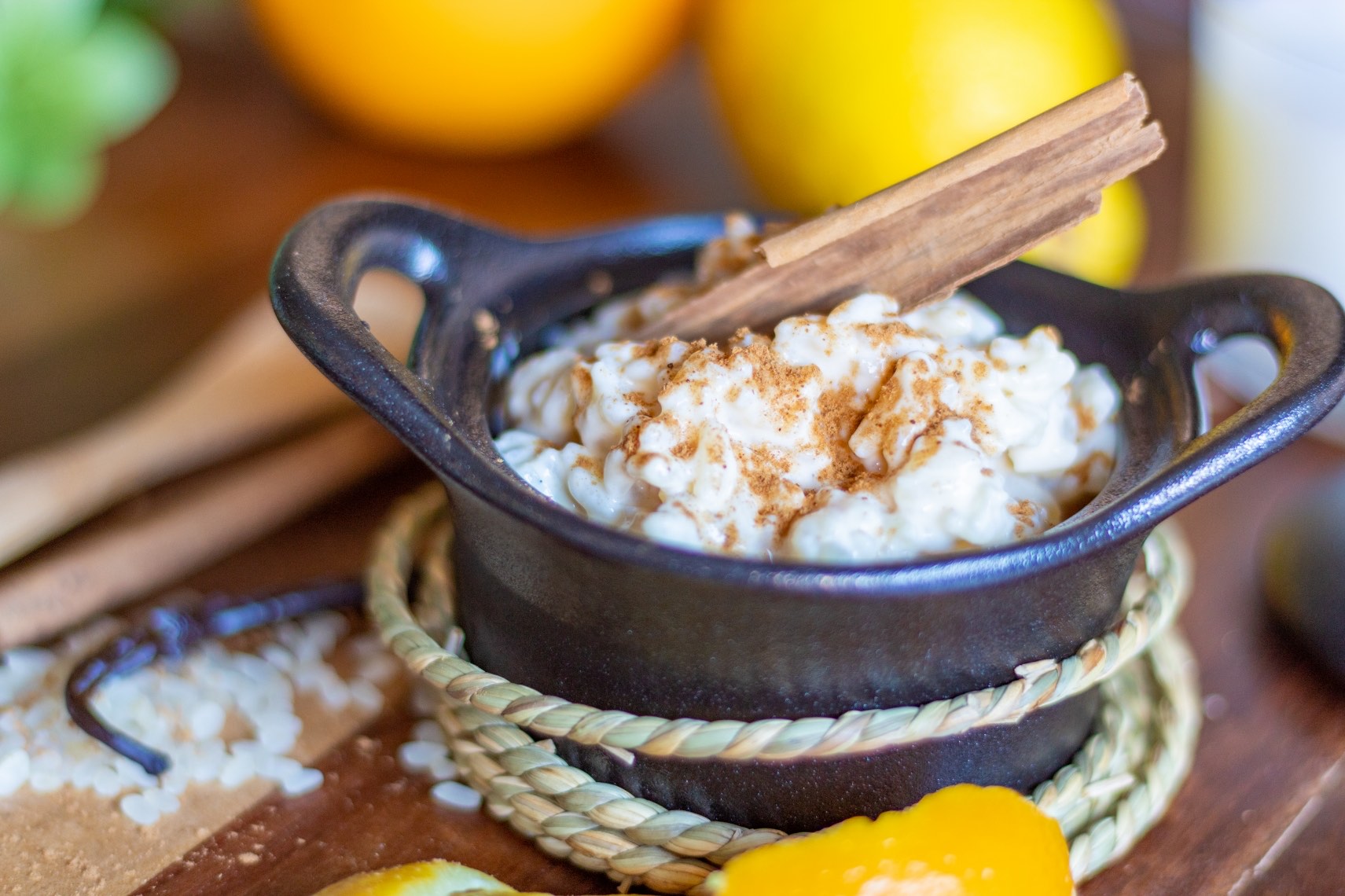
Arroz con leche (rice with milk) is a popular dessert in many Latin American countries, including the Dominican Republic. The Dominican version of arroz con leche is made with white rice, milk, sugar, cinnamon sticks, cloves, and raisins.
The rice is cooked in the milk until it is soft and creamy, and the spices are added for flavor. Sometimes, a small amount of nutmeg is also added. Arroz con leche is typically served warm, but it can also be served cold. It is often enjoyed as a dessert after a meal, or as a snack.
Pasteles en Hoja
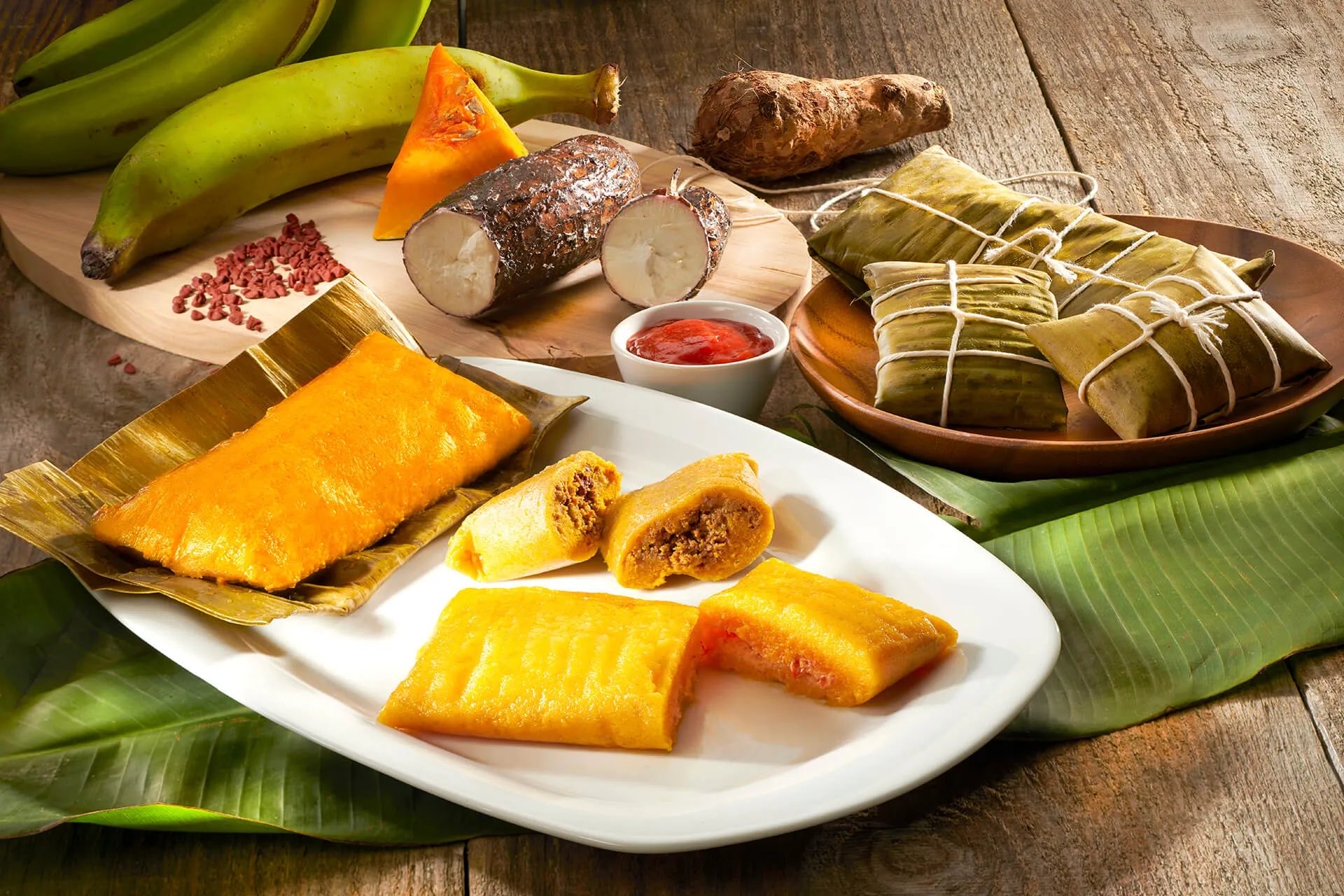
Pasteles en hoja (plantain and beef pockets) are a traditional Dominican dish that is often served during the Christmas and New Year’s Eve holidays. They are made with a masa (dough) of green plantains, yautia (taro root), and other root vegetables, which is then filled with a savory mixture of ground beef, onions, garlic, and spices.
The pasteles are wrapped in plantain leaves and then boiled or steamed until they are cooked through. They can be served hot or cold, and are often accompanied by a dipping sauce such as ketchup or mojo. Pasteles en hoja are a labor-intensive dish, but they are worth the effort. They are a delicious and hearty meal that is sure to please everyone at the table.
Here are some additional facts about pasteles en hoja:
- The name “pasteles en hoja” means “cakes in a leaf” in Spanish.
- The masa for pasteles en hoja is typically made with green plantains, yautia, and other root vegetables such as cassava, malanga, and yam.
- The filling for pasteles en hoja can vary, but it typically includes ground beef, onions, garlic, and spices such as adobo, oregano, and cumin.
- Pasteles en hoja are typically wrapped in plantain leaves, but they can also be wrapped in banana leaves or parchment paper.
- Pasteles en hoja are typically boiled or steamed until they are cooked through.
- Pasteles en hoja can be served hot or cold.
- They are often accompanied by a dipping sauce such as ketchup or mojo.
If you are looking for a delicious and traditional Dominican dish to try, pasteles en hoja are a great option. They are sure to please everyone at the table.
Mondongo
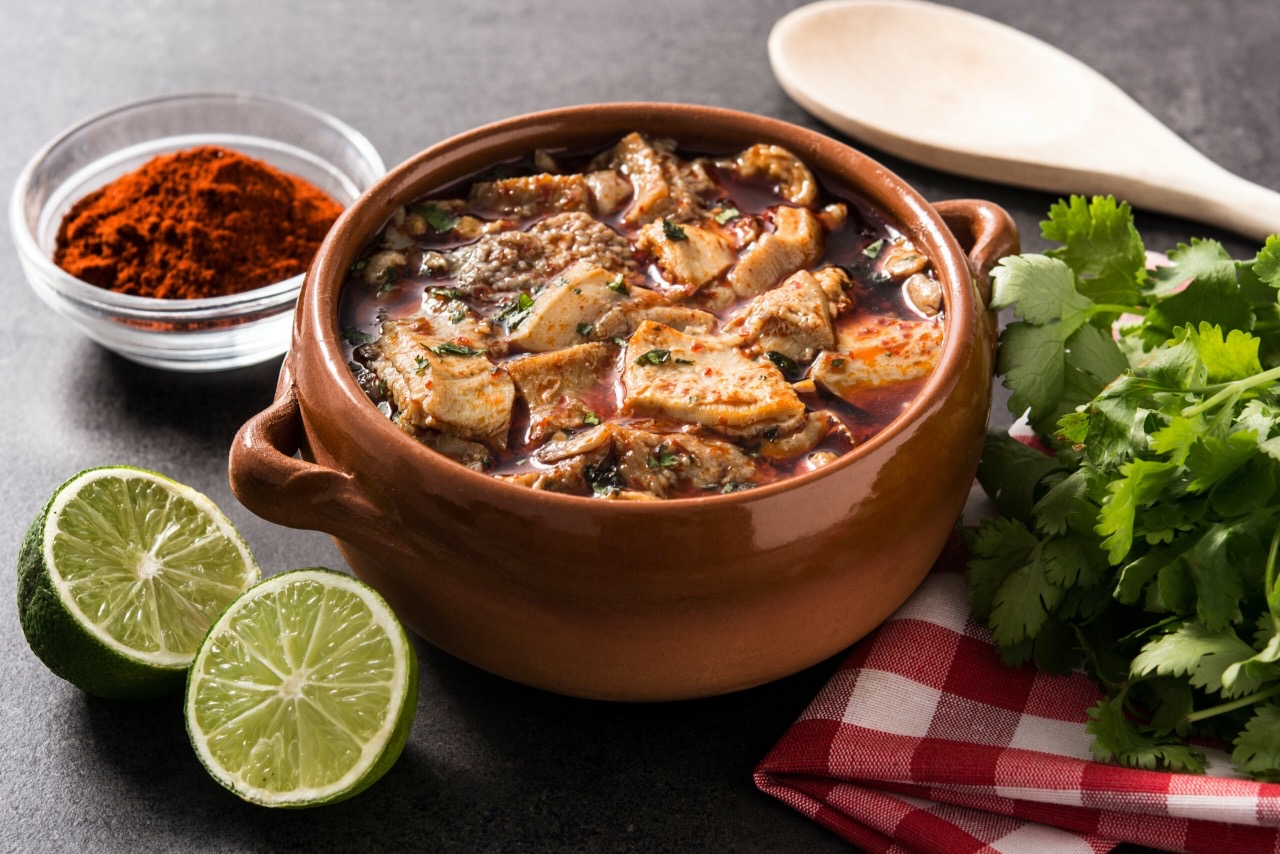
Dominican mondongo is a traditional and beloved dish in the Dominican Republic that holds a special place in the hearts and palates of its people. It is a hearty and flavorful soup made from tripe, a type of edible lining from the stomach of a cow or pig. The dish is typically prepared by simmering the tripe with a variety of ingredients such as vegetables, spices, herbs, and sometimes, smoked meats.
The result is a rich and savory broth that is both comforting and satisfying. The flavors meld together beautifully, creating a delightful combination of textures and tastes. Dominican mondongo is often enjoyed as a main course, accompanied by rice, avocado slices, and a sprinkle of cilantro. It is a true culinary treasure that showcases the vibrant and diverse gastronomy of the Dominican Republic.
Dominican Republic Top Chefs
- Chef Jackeline Henriquez
- Chef Pandita (Yuri Sasaki)
- Chef Maria Marte
- Chef Tita (Inés Páez Nin)
- Chef Gabriella Reginato
- Chef Francisco Gomez Rojas
- Chef Leandro Diaz
- Aunt Clara (Clara Gonzalez)
- Chef Cathy Lemoine
- Chef Eduardo Rodriguez
- Chef Manuel Mendez
- Chef Wandy Robles
- Chef Ana Lebron
- Chef Gina Rivas
Here we list Dominican Republic top chefs with many followers in social media, if you are a cooking enthusiast or starting chef you can follow your favorite ones and learn old and new tricks to make magic in the kitchen from the pros.

The Dominican version of Master Chef © put together the very best of culinary masters in the island, and you can get to see them in the YouTube channel that shows all the seasons with all the participants.
The editor wants to thank Sosua Chef for helping us put together this guide on Dominican Republic food. We also want to acknowledge Aunt Clara from Dominican Cooking for allowing us to share some of her fantastic recipes. Kudos to the Delightful Travelers for their insightful video on Dominican food, and Pero Like Channel for showing us their fantastic food tour in the DR.


